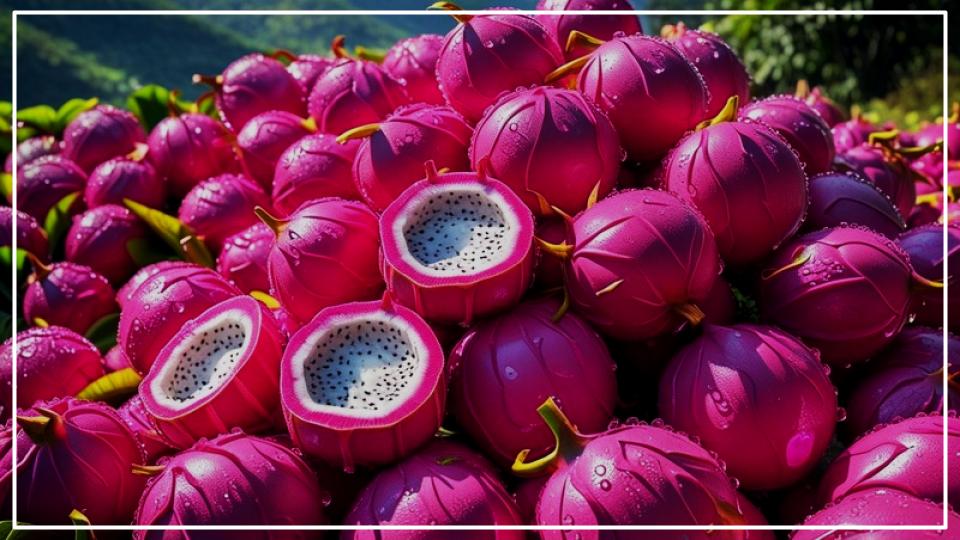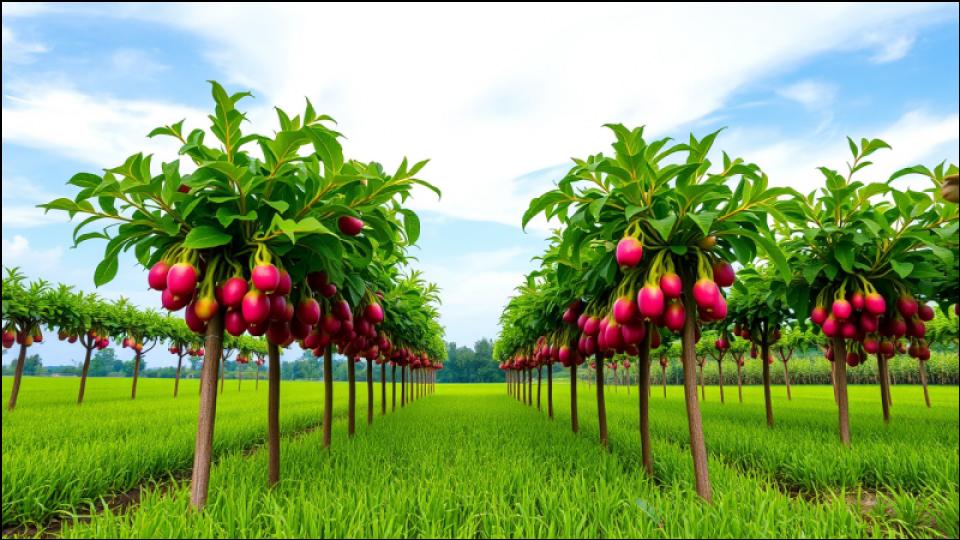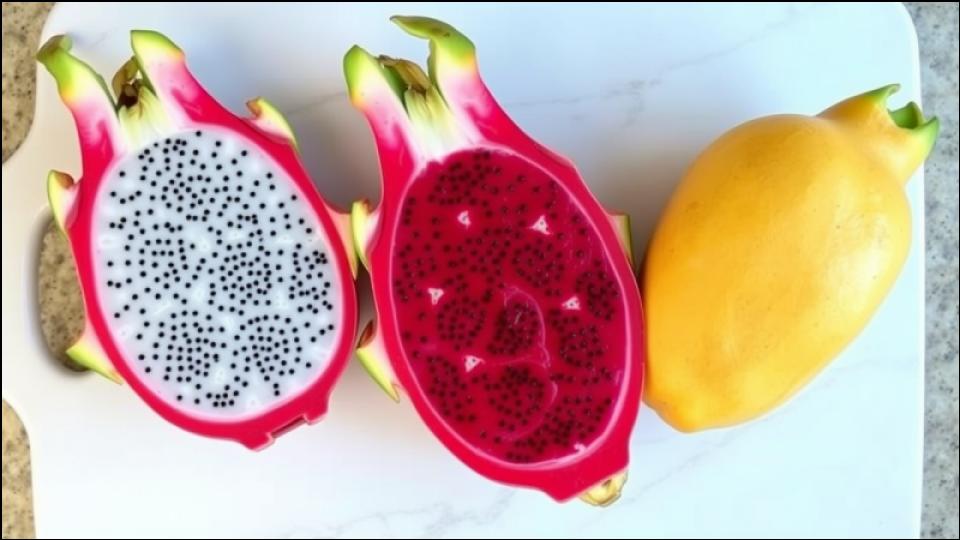
There’s something magical about the dragon fruit. With its shocking pink skin, adorned with delicate, green-tipped scales, it looks like a jewel born from a fantasy novel. Slicing it open only deepens the enchantment, revealing a snow-white or crimson flesh speckled with tiny black seeds. But this exotic beauty, also known as pitaya or strawberry pear, is more than just a feast for the eyes. It’s a global agricultural powerhouse with a fascinating story. This guide will reveal the surprising country famous for dragon fruit, explore its most beloved varieties, and empower you to cultivate a touch of the tropics right in your own garden. Get ready to transform your understanding of this incredible climbing cactus.
Quick Tips for the Dragon Fruit Enthusiast
Here are the key takeaways for appreciating and growing this stunning fruit:
- The World’s Leader: Vietnam is, by a huge margin, the world’s largest producer and exporter of dragon fruit, making it the undisputed capital of pitaya cultivation.
- It’s a Cactus: Dragon fruit grows on a vining, climbing cactus (Hylocereus species) that needs strong support to thrive.
- Sun and Drainage are Key: For happy plants, provide at least six hours of full sun and use a well-draining soil mix, similar to what you’d use for succulents.
- Start with Cuttings: While you can grow them from seed, starting with a stem cutting will get you to a fruit harvest much faster—often within two years.
The Vibrant World of the Night-Blooming Cactus
Before we travel to its global epicenter, let’s properly introduce this magnificent plant. The dragon fruit is the fruit of several different cactus species, primarily from the genus Hylocereus. Native to the Americas, this plant is a hemiepiphyte, meaning it can grow on the ground or, more commonly, climb up trees and posts using its aerial roots.
Its other common name, “Queen of the Night,” hints at its spectacular, fleeting bloom. The flowers are enormous—often a foot in diameter—and breathtakingly fragrant, but they bloom for just a single night, opening at dusk and wilting by morning. In their native habitat, they are pollinated by nocturnal creatures like moths and bats. It is from this brief, beautiful event that the vibrant fruit emerges weeks later.
The Undisputed Leader: Which Country is Famous for Dragon Fruit?
When it comes to sheer volume and global recognition, one nation stands alone: Vietnam. While the fruit is native to Central America, it was Vietnam that transformed it from a regional novelty into a global phenomenon. The country produces well over one million metric tons of dragon fruit annually, cultivating it across more than 55,000 hectares and dominating the export market with an astonishing global share.
How did Vietnam become the king of dragon fruit?
- A Rich History: The French introduced the cactus to Vietnam over a century ago, but it wasn’t until the late 20th century that its commercial potential was realized. Vietnamese farmers began cultivating it on a larger scale, particularly in the sunny, arid southern provinces.
- Ideal Climate: The provinces of Bình Thuận, Long An, and Tiền Giang offer the perfect conditions—plentiful sun, warm temperatures, and the well-drained soils this cactus loves. In my own travels, I’ve seen vast fields where farmers have mastered the art of trellising these cacti on concrete posts, creating otherworldly landscapes of green, vining columns.
- Agricultural Innovation: Vietnamese growers have perfected techniques to produce fruit year-round. A common practice I find fascinating is the use of artificial lighting at night, which stimulates the cactus to flower during the off-season, ensuring a steady supply for international markets.
According to a 2024 report from GlobeNewswire, dragon fruit is one of Vietnam’s most significant agricultural exports, with a value often exceeding $600 million annually. This success story is a testament to the nation’s agricultural ingenuity and favorable climate.

Beyond Vietnam: Other Notable Dragon Fruit Producers
While Vietnam wears the crown, several other countries are significant players in the dragon fruit market. China is a massive producer but also the largest importer, primarily of Vietnamese fruit. Thailand and Indonesia have robust domestic markets and are increasing exports. And, of course, we must honor its origins in Mexico and Central America, where it still grows wild and is cultivated commercially. More recently, countries like Ecuador and even the United States (in California, Florida, and Hawaii) have established successful farms, as noted by the Agricultural Marketing Resource Center.
From Tropical Fields to Your Fruit Bowl: Popular Dragon Fruit Varieties
When you see dragon fruit at the market, you’re likely encountering one of three main types. The visual difference is striking, and the flavors have subtle, wonderful distinctions.
The Classic Beauty: White-Fleshed Pitaya (Hylocereus undatus)
This is the most common and widely cultivated variety, celebrated for its brilliant pink skin and crisp, white pulp. Its flavor is mild and refreshing, often described as a delicate blend of pear and kiwi. The seeds, which are entirely edible, add a pleasant, nutty crunch. This is the variety that forms the backbone of Vietnam’s massive industry.
The Vibrant Contender: Red-Fleshed Pitaya (Hylocereus costaricensis)
Visually, this variety is a showstopper. The skin is typically a deep magenta, and slicing it open reveals a stunning, saturated crimson or fuchsia flesh. For my palate, the red-fleshed varieties often carry a slightly deeper, richer flavor with more berry-like notes than their white-fleshed cousins. As a bonus, studies published in journals like MDPI’s Molecules indicate these red varieties are particularly high in antioxidants like betalains, the same compounds that give beets their color.
The Sweet Surprise: Yellow Pitaya (Selenicereus megalanthus)
Less common but absolutely worth seeking out, the yellow pitaya stands apart with its bright yellow skin and thicker, more prominent scales. The flesh is typically white, but the flavor is often considered the sweetest and most intense of the three.

A Touch of the Tropics: Growing Dragon Fruit at Home
One of the greatest joys of a gardener is successfully cultivating something that seems impossibly exotic. I’m here to tell you that growing your own dragon fruit is not only possible but also incredibly rewarding.
A common mistake I see is treating it like a typical desert cactus. Remember, it’s a climbing tropical cactus that appreciates a bit more water and nutrients than its desert relatives. The University of Florida IFAS Extension provides excellent, detailed guidance for home growers.
Creating the Right Environment
Your dragon fruit will need a few key things to thrive:
- Sunlight: Aim for at least six to eight hours of direct sun per day. In intensely hot climates, a spot with morning sun and light afternoon shade is ideal.
- Support: This is non-negotiable. As a climbing cactus, it needs something sturdy to grow up. A thick, 4×4 inch wooden post, a strong trellis, or a sturdy arbor works perfectly. The plant will become very heavy over time.
- Soil: Excellent drainage is paramount to prevent root rot. Use a sandy, gritty mix. A blend of potting soil with sand or a commercial cactus mix is a great choice.
TOOLS AND MATERIALS BOX
- Large Pot (20-gallon or larger): If not planting in the ground. Ensure it has ample drainage holes.
- Sturdy Trellis or Post: At least 6 feet tall.
- Well-Draining Cactus/Succulent Mix: You can buy this pre-made or mix your own.
- Dragon Fruit Cutting: The fastest way to start.
- Plant Ties: To help train the cactus initially.
Planting, Watering, and Care
Start with a healthy cutting that is 12-15 inches long. Let the cut end “cure” or dry in a shady spot for a few days to prevent rot, then plant it a few inches deep in your prepared soil at the base of your support structure.
Water when the top inch or two of soil is dry, but don’t let it sit in soggy soil. During the growing season (spring and summer), you can feed it with a balanced, low-nitrogen fertilizer every month or two. Once the main stem reaches the top of your trellis, snip the tip to encourage it to branch out. It is these draping, arching branches that will produce flowers and fruit.
A Sweet and Stunning Conclusion
From the sprawling, sun-drenched farms of Vietnam to a single, proud pot in your own backyard, the dragon fruit is a plant that inspires wonder. Its otherworldly appearance, delicate flavor, and spectacular night-blooming flowers offer a unique gardening adventure. Understanding its journey—and the country that so famously cultivates it—adds a rich layer of appreciation to every sweet, refreshing bite.
Read More
Beyond the Grove: The Surprising Country Famous for Producing the Most Oranges
